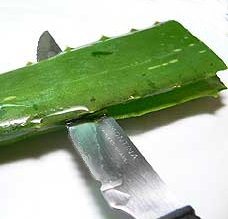Quick orchid care guide
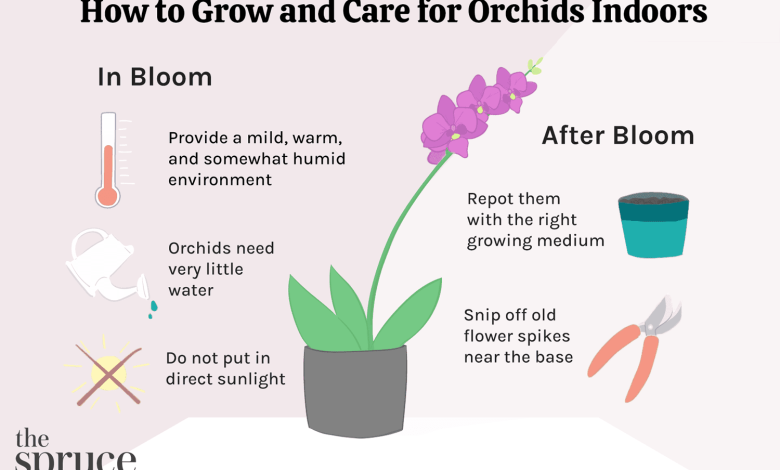
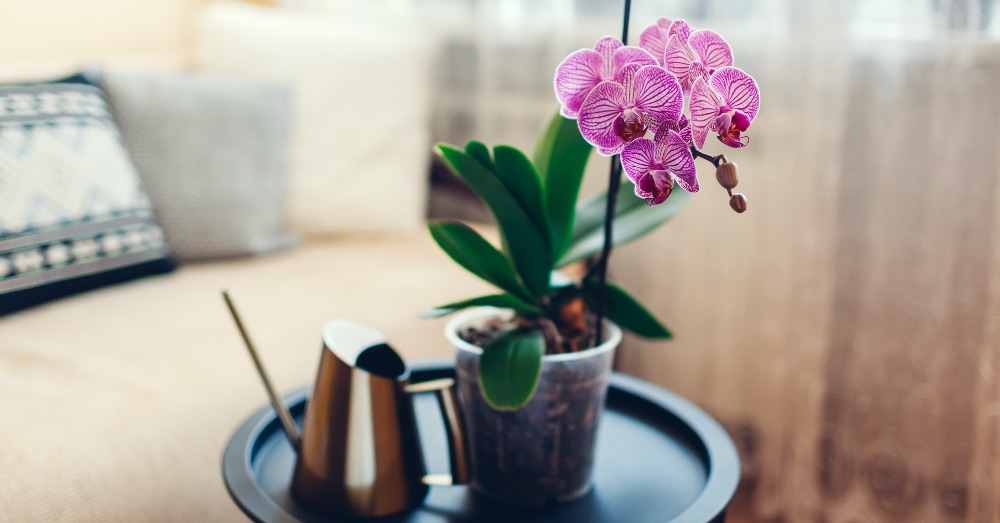
They are one of those flowering plants that arouse as many passions as, unfortunately, frustrations. Elegant and extremely beautiful, we tend to think that orchid care is not suitable for everyone. And, despite the myth, the truth is that they are much easier to grow than it seems at first glance. It is enough, in fact, to know their peculiarities in depth to be able to carry them out without too much complication. What’s more: curiously and contrary to popular belief, they are not the plants that require the most from us to get ahead.
Although it may seem like a current fashion, the passion for orchids is an inherited tradition. Between the 18th and 19th centuries, Europe experienced a real craze for these plants. In a very short time, they became a true symbol of the wealthy classes; and the passion unleashed would be such that, when a collector made one of his plants bloom, he would even celebrate a party that even the newspapers echoed. Unfortunately, this effort to have increasingly rare orchids brought with it a natural plundering that triggered the danger of extinction of a good number of species.
Nowadays, the fever for orchids is completely different and a good part of the ones we enjoy are hybrids of those species that conquered Europe. A fact that greatly facilitates the care of orchids in our latitudes.
7 ESSENTIAL STEPS IN THE CARE OF ORCHIDS
Although orchid care depends largely on the species we have, there are some that are common to all of them. Very quickly, our colleague Miguel tells us the basic care that we must know before seeing the specifics in detail. Get down to business in just two minutes!
It is important to know that, apart from the different types of orchids that exist, they all come from tropical climates. Some origins that mark a lot! your needs for lighting, temperature and even humidity. Although where they come from may seem secondary to us, it is not. As with many other exotic indoor plants, the success of their cultivation lies largely in recreating conditions as similar as possible to those found in the place where they originate.
In the case of orchids, the fact that they are hybrids has made them more resistant and less demanding in this regard. But be careful: no matter how acclimatized they are to our climate, orchid care continues to be highly specific. Only by giving them exactly what they need will our plant grow well. What’s more: only knowing their needs will we have the answer to how to achieve the flowering of orchids.
So let’s see what are the essential care of orchids to enjoy them, both with flower and without it.
1. Lighting, essential for these plants
While there are quite a few low-light houseplants out there, that’s not the case with orchids. We are talking about plants with a very high need for light, both to be healthy and to flourish. But be careful with this, because it is vital not to confuse concepts. Unless we consider how to care for the cymbidum or Vanda orchid, we will not be able to expose our orchids to direct sunlight. It is as harmful, in fact, as the lack of light that will limit its growth and can even cause the death of the plant.
In the absence of seeing in detail what is the most suitable light for orchids according to their type, there is a common maxim for all of them: have it in a very bright space.
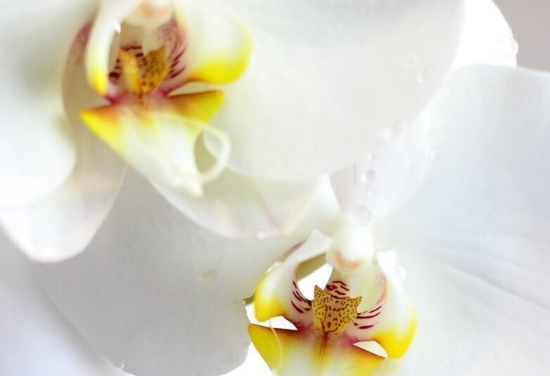
2. The location, a detail that we have to take care of
As important, even, as light. In fact, a good part of the success of the flowering of orchids lies in the fact that we find the right place for their cultivation. Their light needs make windows a perfect place, but be careful: if they are in danger of receiving direct sun, we will have to filter the light through net curtains or curtains.
Apart from this, it is important that our orchids are away from artificial sources of heat and drafts. They do not tolerate them to the point that they can compromise their lives. Be careful with this detail, because one of the cares of the orchids that we must take care of is that they have renewed and fresh air on a regular basis. Something that we will have to give them but always avoiding exposing them directly to ventilation.
3. Irrigation, vital in the care of orchids
It is, without a doubt, the crucial care of these plants. We say this because the danger of excess water in orchids is the cause of much of the frustration felt by many who are passionate about this flowering plant. And it is excessive irrigation goes hand in hand with the appearance of fungi: a bad companion for these plants.
When we talk about the care of orchids and we know that they are plants from tropical climates, we usually automatically think of a lot of water. And no, it’s not exactly like that. In their natural state, most orchids are epiphytes and live with their roots in the air, hydrating themselves with the humidity of the environment. A detail that gives us an idea of one of their needs: to have a humid environment. Something that we can achieve by using a humidifier or a fogger if we live in a dry climate; or, simply, placing a bowl of water near them so that they have that atmosphere they need.
How and when to water orchids
And we come to the heart of the matter. Knowing how and when to water orchids is critical to their health, so it’s worth taking some time to learn both how to do it and what pattern they may need.
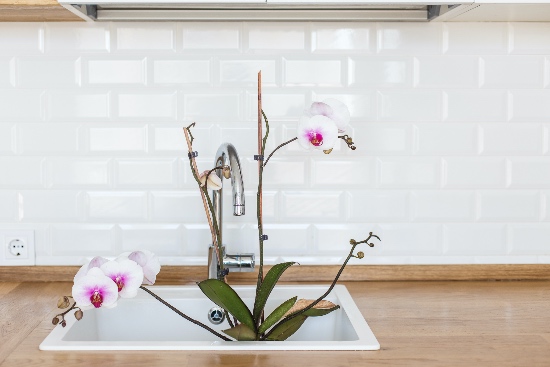
Let’s start with the how. In general, the ideal is to water by immersion by submerging the pot in water for a few minutes. It is important to prevent the leaves from getting wet and, fundamentally, that water does not enter the crown: the area where the green parts are born. After a few minutes, we will let the pot drain the excess water before placing it back in its usual location. In addition to this, we will have to pamper the type of water. The ideal is to irrigate with weakly mineralized water, such as mineral water or rainwater. Avoid watering with distilled water.
And when do we know it’s time to water? In the case of most of them, the roots will tell us. When they take on a silver-gray hue, it’s time to do it. In the case of terrestrial orchids, when the substrate is dry and the roots are whitish. Let’s remember: the orchid tolerates drought much better than excess watering. In the case of orchids with roots in the air, such as the Vanda, spray water regularly on the roots, allowing them to dry between applications.
4. The subscriber, essential for the development of the plant
Fundamental. Let us bear in mind that, although they also absorb nutrients through their leaves, a good part of the orchids grow on an inert substrate of pine bark. For this reason, its roots do not find what they need to grow in times of development, and they need a supplement to be able to grow and flourish.
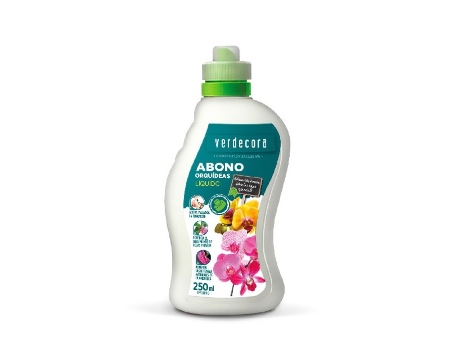
In addition to knowing the different orchid fertilizer options and how to choose the right one, let’s take into account a couple of crucial aspects. On the one hand, the ideal in spring and summer is to use a liquid fertilizer that we can dissolve in the irrigation water. In this way, it will directly nourish the roots, helping in their growth. On the other hand, and as happens with irrigation, let us remember that it is better to err by default than by excess. An orchid tolerates a lack of nutrients better than too much fertilizer.
5. Temperature, another key detail
Remember: they are plants of tropical origin. And, although it is true that the incredible variety of orchids means that we even have some from cold areas, it is essential to know in detail the needs of our plant so as not to expose it to temperatures that could compromise its life.
Let’s see a quick x-ray of the classification of orchids based on their tolerance to cold or heat:
- Orchids from warm areas: they suffer below 16 degrees, although they tolerate heat without problem. In order to grow and flourish, they need to have four-degree oscillations between day and night.
- Orchids from temperate zones: we should not expose them to less than 11 degrees. They need a six degree swing between day and night
- Orchids of cold zones: they can never be less than eight degrees. They also need a six degree oscillation between day and night
6. The transplant, one of the care of the orchids that we must take care of
It is not one of the cares for orchids that should worry us the most, since it is carried out from time to time and only under very specific circumstances. But be careful not to give it the importance it deserves: even if we only transplant our plant every two years, it is a task that we must know in detail so that it plays in favor of its well-being.
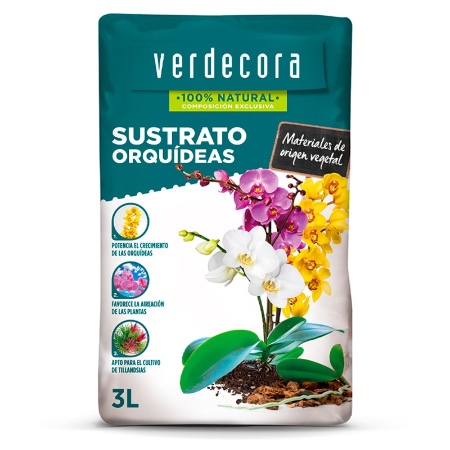
In addition to knowing when and how to transplant orchids correctly, it is important to keep in mind that it is a task that we will always have to do at the end of summer or, at most, until mid-autumn. And, if our plant does not meet the characteristics that it must have to change to a larger pot, it is important to consider that annually or, at most, every two years, it will need a change of substrate.
7. Pests and fungi, enemies to know up close
And so close! One of the worst fears of any lover of these plants is facing orchid pests or, even worse, orchid diseases. Two enemies that can compromise and kill our plant if we are not able to stop their progress.
As important as knowing how to identify these ailments is to take into account something vital. A healthy, properly watered and well-nourished plant will present natural resistance to both types of threats. So if we want to avoid complaining, there is nothing like taking care of our orchid as it deserves.
Lose your fear of these wonderful plants and enjoy their incredible beauty! We are sure that you will not regret pampering her.

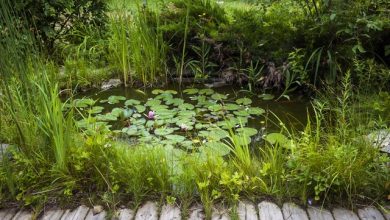

![Photo of Sow Carrots: [Date, Irrigation, Substrate, Care, Harvest and Pests]](https://www.complete-gardening.com/wp-content/uploads/2022/08/sow-carrots-date-irrigation-substrate-care-harvest-and-pests-390x220.jpg)
